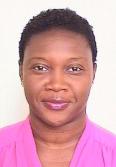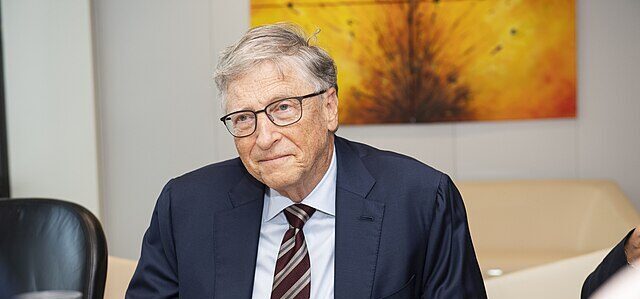Reaching the 2030 Sustainable Development Goals will require regional and local development actors to take a leading role in implementation. Those local actors are among the most capable – and most motivated – to help lift up the economic prospects and human development of themselves and their neighbours.
The World Bank Group’s Partnership Fund for the SDGs (Partnership Fund) is working with development professionals to provide vital support and serve as a catalyst to help local people take true ownership of the process to help meet the ambitious global goals in some of the poorest nations and regions of the world. It also aims to support local, regional and national governments to make decisions that contribute towards the achievement of the SDGs, and to inform policy-making to create an enabling environment.
Lisa Maria Castro
Utilising the deep knowledge of World Bank Group experts, its seed funding to high-impact and low-cost initiatives has catalysed millions of additional dollars through multi-stakeholder partnerships to help transfer skills and technology while achieving concrete deliverables toward the SDGs. Partnering with the Swedish International Development Cooperation Agency (Sida), Hyundai Steel, the William and Flora Hewlett Foundation, and the government of Korea, the Partnership Fund has worked in more than 60 countries and with over 400 partners, including UN agencies, governments, private actors, academic institutions and civil society.
Its catalytic impacts in 2022 include the following: informing US$68 billion in Sustainable Development Bonds issued in 25 currencies for hundreds of World Bank projects; supporting the mobilisation of over 200,000 micro-loans valued at US$140 million for rural women, women-led businesses and entrepreneurs; helping support over 700,000 micro-loans valued at more than US$646 million for farmers and agri-MSMEs; and facilitating over US$230 million across WBG lending operations to enable increased installed generation capacity, distribution, and financing of reliable electricity to urban centres through distributed photovoltaics (solar rooftops).
Why localising the SDGs matters

Anna Thompson-Quaye
The 2030 Agenda and SDGs must match local conditions, and local-level actions across the world must be accelerated. While the SDGs are global, their achievement will depend on our ability to make them a reality in our cities and regions. All of the SDGs have targets directly related to the responsibilities of local and regional governments, particularly regarding their role in delivering basic services. That’s why local and regional governments must be at the heart of the 2030 Agenda.
About one-third of Partnership Fund projects directly support local and regional civil society organisations. This local focus is critical because the decisions we make about city planning and management—and the investments we make in housing, transportation, human service delivery and other areas—will have long-term impacts on sustainability, both locally and globally. The lock-in effects of these decisions have a direct impact on the use of resources, greenhouse gas emissions, and the degree of socio-economic inclusion of the population, in some cases for decades, and determine the capacities of countries to meet their climate commitments and the implementation of the 2030 Agenda.
Showing local impact and scalability
A good illustration of its focus on local investment and capacity-building is the Partnership Fund-supported rooftop solar photovoltaics (PV) mapping and market facilitation project (supporting SDGs 7, 9, 11, 13, 17) which used satellite data to assess the technical limitation of available space for solar PV installation by undertaking a detailed mapping of rooftop solar PV potential in 14 cities globally, thus providing local actors with critical data to expand solar energy usage. The project partners – including the private sector solar data and software entity Solargis – delivered a successful pilot in Mexico City and replicated the work in 13 other cities, while digitally disseminating tools, training, and results which are being used to inform over US$232 million in World Bank lending operations in Bangladesh, Mexico, Nigeria, Pakistan, the Philippines and Turkey.
The Partnership Fund also supported qualitative and interactive mapping of gender-based violence (GBV) service providers (SDGs 5, 16, 17) in three pilot countries, including Nigeria, Liberia and Mozambique. The mapping helps identify accessibility, geographical coverage, and quality of service provision for GBV survivors, while helping with the training and capacity building of relevant UN agencies and local partners and making the data publicly available. This standardised data tool developed to enhance service delivery for survivors of GBV across five projects is now tied to over US$95 million in World Bank Group lending operations.
Meanwhile, the Partnership Fund supported two activities through the Geo-Enabling initiative for Monitoring & Supervision (GEMS) that build local capacity in digital data collection and analysis. The first was for real-time monitoring of operations in Fragility, Conflict and Violence (FCV) Settings and Small-Island Developing States (SIDS) (SDGs 3, 9, 16), which has supported more than 250 World Bank-funded projects in over 50 countries, training thousands of government staff for real-time project monitoring and evaluation, as part of the Covid-19 response in FCV situations and SIDS.
Demonstrating the Partnership Fund’s multiplier effect, the funds granted to benefit Jamaica catalysed a US$20 million investment project lending operation requested by the Government of Jamaica to expand coverage and delivery of social protection through an Unemployment Insurance scheme expected to benefit 1.27 million working Jamaicans
A second GEMS activity supports monitoring of high-emission sectors through digital tools and local capacity-building (SDGs 10, 16, 17). In this case, GEMS systematically builds capacity among partners to leverage field-appropriate technology to track implementation and output at sub-project level in high-emission sectors, such as agriculture, energy, transport and urban development in over 200 World Bank-funded projects. ‘GEMS allows us to report environmental issues in real-time, allowing for immediate action by the authorities,’ said Issa Sana, Secretary General of the Community Monitoring Committee, Macina, of the Niger River GEMS Project. Both GEMS activities have focused on local ownership, contributing to government accountability mechanisms through sustainable and scalable tools and methods.
In Jamaica and St Lucia, the Partnership Fund supported strengthened social protection systems (SDGs 1, 5, 10), when the Covid-19 pandemic caused hundreds of thousands of job losses in these two nations. This project developed analytical tools and provided the evidence base to strengthen social protection policies and services to support Covid-19 recovery and beyond, in line with SDG target 1.3 in Jamaica and St Lucia.
Demonstrating the Partnership Fund’s multiplier effect, the funds granted to benefit Jamaica catalysed a US$20 million investment project lending operation requested by the Government of Jamaica to expand coverage and delivery of social protection through an Unemployment Insurance scheme expected to benefit 1.27 million working Jamaicans. This work also helped facilitate expansion of St. Lucia’s Public Assistance Program (PAP), its main cash transfer programme, to additional households, and an update of the country’s social protection strategy is expected to be approved by the Cabinet in mid-2023.
Going local to achieve the global Goals
At just over the halfway mark to 2030, there are monumental challenges standing in the way of achieving the SDGs’ Agenda for Sustainable Development. A top-down approach will not work. All levels of the government, economy and society must feel connected to the goals, understanding the concrete impact that achieving them will have.
What the Partnership Fund has reaffirmed is that local actors are essential to achieving the global goals, and that’s why it continues to invest – while catalysing millions of additional dollars -to empower local actors with the resources and skills to help make tangible progress on challenges that affect them most, such as climate change, poverty, or conflict in their communities. That’s why the Partnership Fund invests in innovation at the local and regional levels, while helping to bring programmes to scale where lessons can be learned and shared broadly with its partners and beyond.
The Partnership Fund’s focus has always been its commitment to partnerships, as reflected in SDG 17. We do this because we know that our partners, especially local actors who have the most at stake, share the Fund’s vision and sense of urgency to build a world that is greener, more resilient, and inclusive – leaving no-one behind.
Anna Thompson-Quaye is the Lead, Partnerships, in the Engagement and Partnerships unit, World Bank Group atquaye@worldbank.org
Lisa Maria Castro is Research Analyst, World Bank Group Partnership Fund for the Sustainable Development Goals lcastro1@worldbank.org
General email for inquiries: wbgsdgfund@worldbankgroup.org
Credit:Source link



